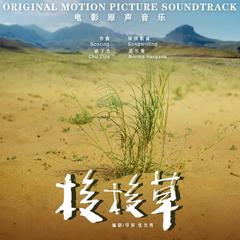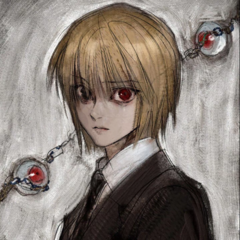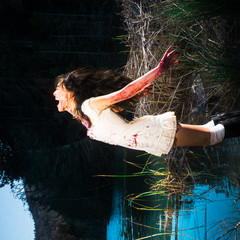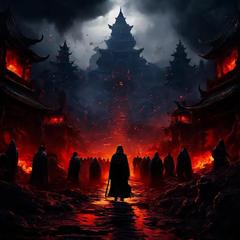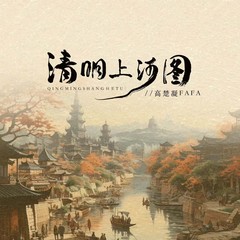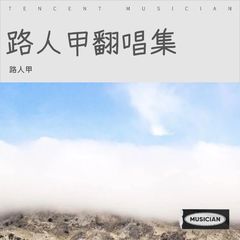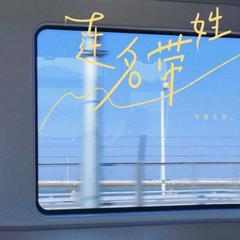Elvis Costello
Elvis Costello是位无师自通的歌曲创作者,1969年开始登台演出,Elvis Costello的第一张唱片于1977年发行的时候,他那令人毛骨悚然的讽刺和愤怒不得不使人们把他和朋克及新浪潮运动联系起来。任何一个听过“My Aim Is True”的人都能证明Costello和朋克主要的联系就是他那肆无忌惮的激情。他从经典摇滚中任意索取他想要的一切,也从乡村音乐中索龋还有 Pop、Reggae等多种音乐类型。音乐的多样性,加上锋利的歌词,使Costello别具一格。因为他用多元化的音乐去搭配他的歌词, Costello被认为是自Bob Dylan后最具创新精神,最有影响,也是最好的歌曲创作者之一。by Stephen Thomas ErlewineWhen Elvis Costellos first record was released in 1977, his bristling cynicism and anger linked him with the punk and new wave explosion. A cursory listen to My Aim Is True proves that the main connection that Costello had with the punks was his unbridled passion. He tore through rocks back pages taking whatever he wanted, as well as borrowing from country, Tin Pan Alley pop, reggae, and many other musical genres. Over his career, that musical eclecticism has distinguished Costellos records as much as his fiercely literate lyrics. Because he supports his lyrics with his richly diverse music, Costello is one of the most innovative, influential, and best songwriters since Bob Dylan.The son of British bandleader Ross McManus, Costello (born Declan McManus) worked as a computer programmer during the early 70s, performing under the name D.P. Costello in various folk clubs. In 1976, he became the leader of country-rock group Flip City. During this time, he recorded several demo tapes of his original material with the intention of landing a record contract. A copy of these tapes made its way to Jake Riviera, one of the heads of the fledgling independent record label Stiff. Riviera signed Costello to Stiff as a solo artist in 1977; the singer/songwriter adopted the name Elvis Costello at this time, taking his first name from Elvis Presley and his last name from his mothers maiden name.With former Brinsley Schwarz bassist Nick Lowe producing, Costello began recording his debut album with the American band Clover providing support. Less Than Zero, the first single released from these sessions, appeared in April of 1977. The single failed to chart, as did its follow-up, Alison, which was released the following month. By the summer of 1977, Costellos permanent backing band had been assembled. Featuring bassist Bruce Thomas, keyboardist Steve Nieve, and drummer Pete Thomas (no relation to Bruce), the group was named the Attractions; they made their live debut in July of 1977.My Aim Is True, his debut album, was released in the summer of 1977 to positive reviews; the album climbed to number 14 on the British charts but it wasnt released on his American label, Columbia Records, until later in the year. Along with Nick Lowe, Ian Dury, and Wreckless Eric, Costello participated in the Stiffs Live package tour in the fall. At the end of the year, Jake Riviera split from Stiff Records to form Radar Records, taking Costello and Lowe with him. Costellos last single for Stiff, the reggae-inflected Watching the Detectives, became his first hit, climbing to number 15 at the end of the year.This Years Model, Costellos first album recorded with the Attractions, was released in the spring of 1978. A rawer, harder-rocking record than My Aim Is True, This Years Model was also a bigger hit, reaching number four in Britain and number 30 in America. Released the following year, Armed Forces was a more ambitious and musically diverse album than either of his previous records. It was another hit, reaching number two in the U.K. and cracking the Top Ten in the U.S. Olivers Army, the first single from the album, also peaked at number two in Britain; none of the singles from Armed Forces charted in America. In the summer of 1979, he produced the self-titled debut album by the Specials, the leaders of the ska revival movement.In February of 1980, the soul-influenced Get Happy!! was released; it was the first record on Rivieras new record label, F-Beat. Get Happy!! was another hit, peaking at number two in Britain and number 11 in America. Later that year, two collections of B-sides, singles, and outtakes called Taking Liberties was released in America; in Britain, a similar album called Ten Bloody Marys & Ten Hows Your Fathers appeared as a cassette-only release, complete with different tracks than the American version.Costello and the Attractions released Trust in early 1981; it was his fifth album in a row produced by Nick Lowe. Trust debuted at number nine in the British charts and worked its way into the Top 30 in the U.S. During the spring of 1981, Costello and the Attractions began recording an album of country covers with famed Nashville producer Billy Sherrill, who recorded hit records for George Jones and Charlie Rich, among others. The resulting album, Almost Blue, was released at the end of the year to mixed reviews, although the single A Good Year for the Roses was a British Top Ten hit.Costellos next album, Imperial Bedroom (1982), was an ambitious set of lushly arranged pop produced by Geoff Emerick, who engineered several of the Beatles most acclaimed albums. Imperial Bedroom received some of his best reviews, yet it failed to yield a Top 40 hit in either England or America; the album did debut at number six in the U.K. For 1983s Punch the Clock, Costello worked with Clive Langer and Alan Winstanley, who were responsible for several of the biggest British hits in the early 80s. The collaboration proved commercially successful, as the album peaked at number three in the U.K. (number 24 in the U.S.) and the single Everyday I Write the Book cracked the Top 40 in both Britain and America. Costello tried to replicate the success of Punch the Clock with his next record, 1984s Goodbye Cruel World, but the album was a commercial and critical failure.After the release of Goodbye Cruel World, Costello embarked on his first solo tour in the summer of 1984. Costello was relatively inactive during 1985, releasing only one new single (The Peoples Limousine, a collaboration with singer/songwriter T-Bone Burnett released under the name the Coward Brothers) and producing Rum Sodomy and the Lash, the second album by the punk-folk band the Pogues. Both projects were indications that he was moving toward a stripped-down, folky approach and 1986s King of America confirmed that suspicion. Recorded without the Attractions and released under the name the Costello Show, King of America was essentially a country-folk album and it received the best reviews of any album he had recorded since Imperial Bedroom. It was followed at the end of the year by the edgy Blood and Chocolate, a reunion with the Attractions and producer Nick Lowe. Costello would not record another album with the Attractions until 1994.During 1987, Costello negotiated a new worldwide record contract with Warner Bros. Records and began a songwriting collaboration with Paul McCartney. Two years later, he released Spike, the most musically diverse collection he had ever recorded. Spike featured the first appearance of songs written by Costello and McCartney, including the single Veronica. Veronica became his biggest American hit, peaking at number 19. Two years later, he released Mighty Like a Rose, which echoed Spike in its diversity, yet it was a darker, more challenging record. In 1993, Costello collaborated with the Brodsky Quartet on The Juliet Letters, a song cycle that was the songwriters first attempt at classical music; he also wrote an entire album for former Transvision Vamp singer Wendy James called Now Aint the Time for Your Tears. That same year, Costello licensed the rights to his pre-1987 catalog (My Aim Is True to Blood and Chocolate) to Rykodisc in America.Costello reunited with the Attractions to record the majority of 1994s Brutal Youth, the most straightforward and pop-oriented album he had recorded since Goodbye Cruel World. The Attractions backed Costello on a worldwide tour in 1994 and played concerts with him throughout 1995. In 1995, he released his long-shelved collection of covers, Kojak Variety. In the spring of 1996, Costello released All This Useless Beauty, which featured a number of original songs he had given to other artists, but never recorded himself. Painted from Memory, a collaboration with the legendary Burt Bacharach, followed in 1998. The album was a success critically, but it only succeeded in foreign markets, outside of their home countries of the United States and Britain. A jazz version of the record made with Bill Frisell was put on hold when Costellos label began to freeze up due to political maneuvering. Undaunted, Costello and Bacharach hit the road and performed in the States and Europe. Then after Bacharach left Costello added Steve Nieve to the tour and traveled around the world on what they dubbed the Lonely World Tour. This took them into 1999, where both Notting Hill and Austin Powers: The Spy Who Shagged Me featured significant contributions from Costello. In fact, he appeared with Bacharach in the latter as a pair of Carnaby Street musicians, albeit street musicians with a gorgeous grand piano at their disposal.Continuing his tour with Nieve, he began singing the last song with a microphone, forcing the audience to sit in complete silence as he usually performed Couldnt Call It Unexpected, No. 4 with nothing but his dulcet baritone filling the auditorium. After the record companys various mergers ended, Costello found himself on Universal Records and he tested their promotional abilities with a second greatest-hits record (The Very Best of Elvis Costello). The label promoted the album strongly, making it a hit in his native Britain. Unfortunately, they also made it clear that they had no intention of giving a new album the same promotional push, leaving him to venture into other fields as he awaited the end of his record contract. His first project was an album of pop standards performed with Anne Sofie Von Otter, which included a few songs originally written by Costello. The album came out in March of 2001 on the Deutsche Grammophon label, and it neatly coincided with the extensive re-release of his entire catalog up to 1996 under Rhino Records. Each disc included an extra CD of rare material and liner notes written by Costello, making them incredible treats for fans.In 2001 he found himself with a residency at UCLA, where he performed several concerts and was instrumental in teaching music during the year. He also began work on a self-produced album that featured Pete Thomas and Nieve — now billed as a band called the Imposters — entitled When I Was Cruel, and the album finally saw release on Island Records in the spring of 2002; at the end of the year, he released a collection of B-sides and leftovers from the albums sessions entitled Cruel Smile.When I Was Cruel kicked off another productive era for the ever prolific Costello. In 2003, he returned with North, a collection of classically styled pop songs pitched halfway between Gershwin and Sondheim. The next year, he collaborated with his new wife, Diana Krall, on her first collection of original material, The Girl in the Other Room. That fall, Costello released two albums of original material: a classical work entitled Il Sogno and the concept album The Delivery Man, a rock & roll record cut with the Imposters. My Flame Burns Blue from 2006 was a live album with Costello fronting the 52-piece jazz orchestra the Metropole Orkest. On the album, classic Costello songs with new orchestral arrangements appeared alongside new compositions and a performance of the entire Il Sogno. The River in Reverse, a collaboration with R&B legend Allen Toussaint, arrived in 2006.


 She - Elvis Costello
She - Elvis Costello